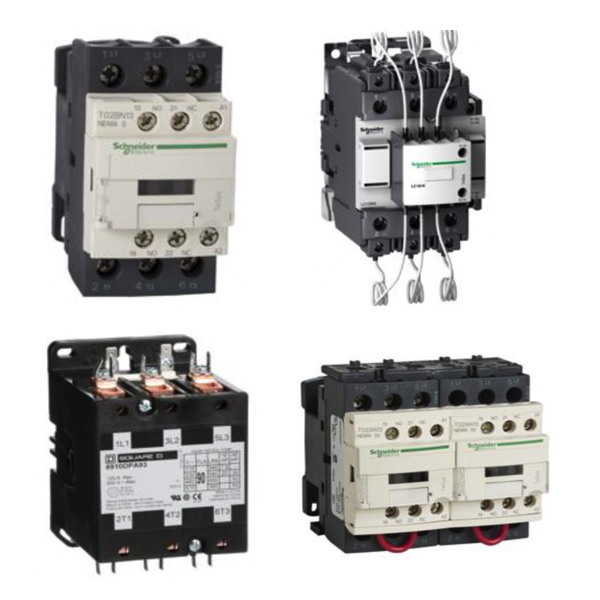Motor Starter Contactors

RSP Supply carries a full line of motor starter contactors from leading brands including ABB, Eaton, Schneider Electric, IDEC, and Benshaw, providing safe and efficient control of electric motors in industrial and commercial systems.
Motor starter contactors are electrically operated switches designed to handle the high electrical loads required by motors. They use electromagnetic force to open or close contacts, safely starting or stopping motor operation while minimizing electrical arcing and wear.
When combined with overload relays, these contactors form motor starters that protect against current surges and overheating. Auxiliary contacts can also be added to provide control signals and feedback to automation systems or safety interlocks, improving overall system communication and reliability.
FAQs
Q: What is the difference between a contactor and a motor starter?
A contactor controls the switching of power to a motor, while a motor starter includes both a contactor and an overload relay for motor protection.
Q: What’s the difference between IEC and NEMA contactors?
IEC contactors are compact, cost-efficient, and ideal for modern automated systems, while NEMA contactors are larger, more durable, and designed for heavy-duty industrial applications.
Q: Do motor starter contactors provide overload protection?
Not directly. Overload protection is provided by a separate overload relay paired with the contactor to prevent motor overheating or current surges.
Q: Can auxiliary contacts be added to motor starter contactors?
Yes. Auxiliary contacts can be integrated to send control signals, system feedback, or safety interlocks for better automation and protection.
Q: What brands of motor starter contactors does RSP Supply carry?
RSP Supply partners with ABB, Eaton, Schneider Electric, IDEC, and Benshaw contactors for both IEC and NEMA applications.
Why Buy Motor Starter Contactors from RSP Supply
At RSP Supply, we offer top-tier motor starter contactors backed by industry expertise and exceptional service. With leading brands in stock, we help you find the right solution for your motor control needs - whether that’s a compact IEC contactor or a heavy-duty NEMA model.
Enjoy competitive pricing, expert guidance, and same-day shipping to keep your projects on schedule and your systems running safely and efficiently.

